Search data
The system is designed for a large number of employees to work with company information. Company data can be accumulated over the years as you work, so the system has a variety of information search tools.
Using filters
Depending on the section you are in, the left pane displays different filters that correspond to the specifics of the information presented in that section.
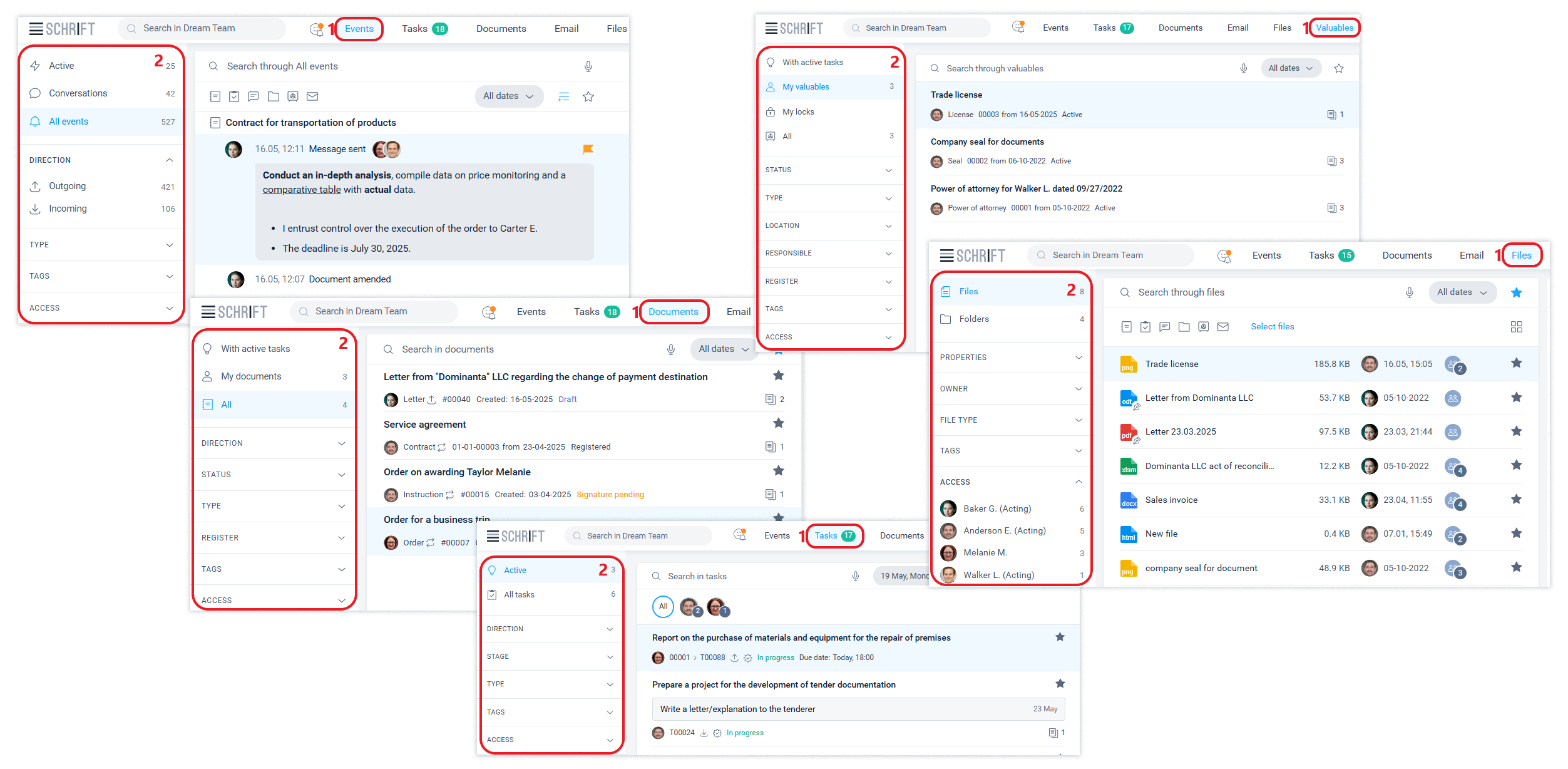
If you need to select information that meets two or more criteria at the same time, set additional criteria without removing the previous filter.
In each filter, you can enable any 1 criterion.
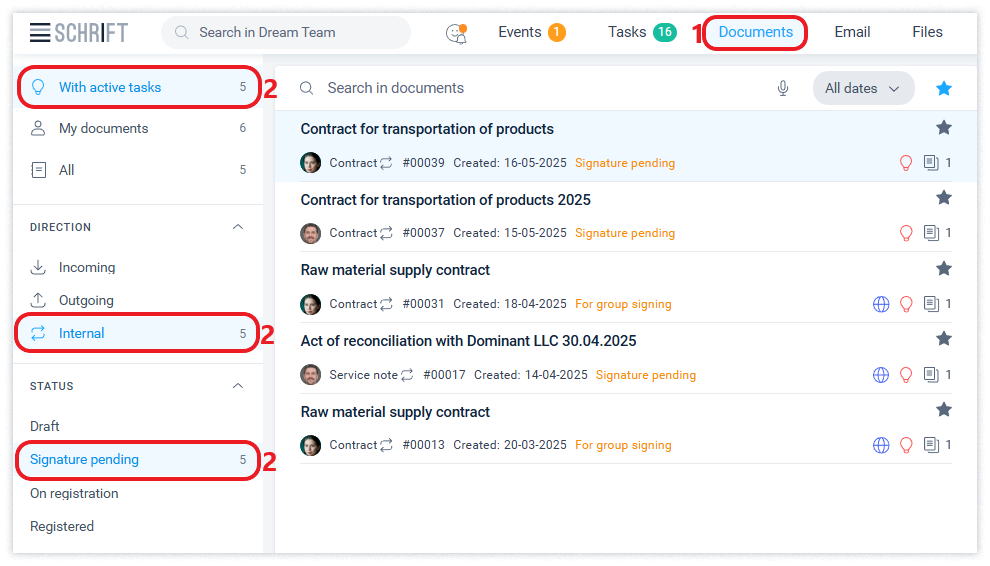
Specify the period for which you are interested in information.
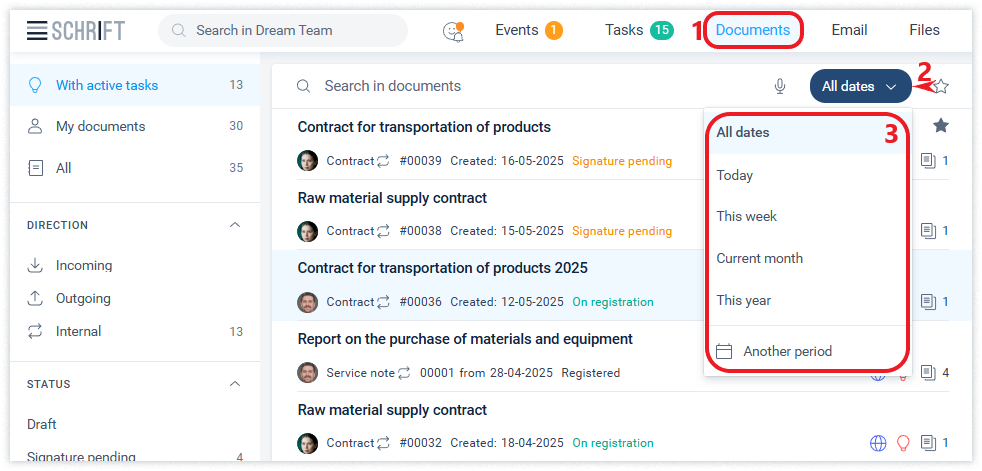
Turn on the Favorites filter.
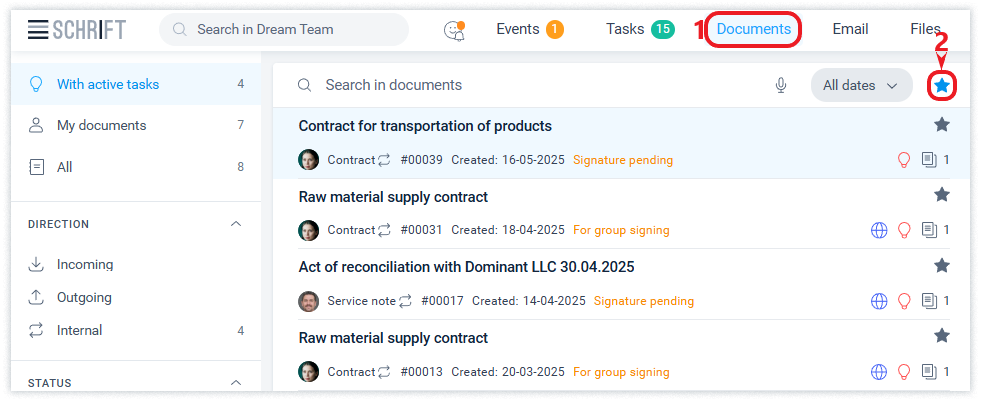
Tasks can also be filtered by high priority.
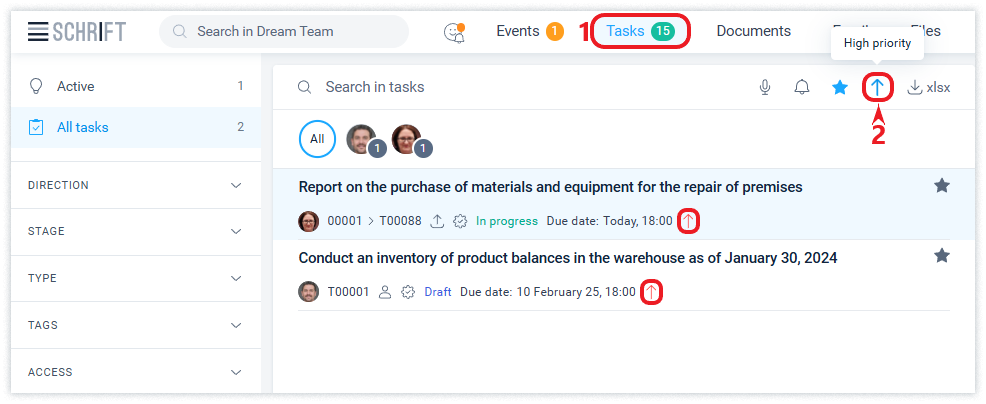
When searching for an event, file, or object, you can specify what type of object it belongs to (task, document, chat, folder, value).
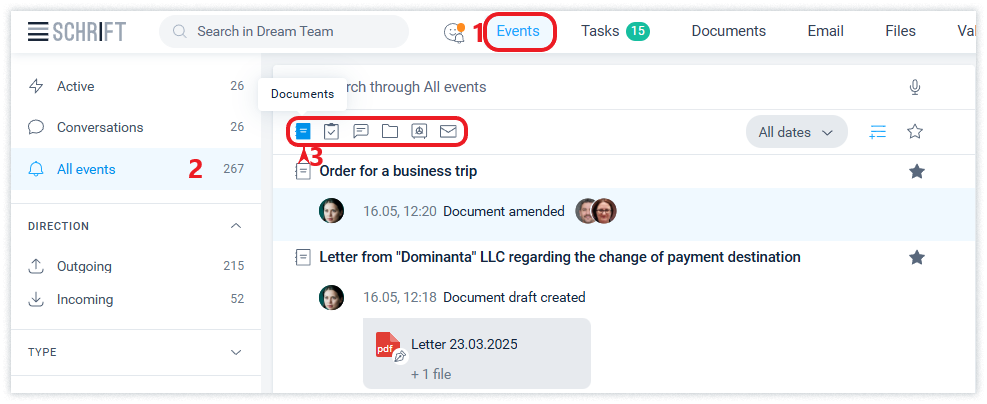
Filter for major and minor events
Events can be major and minor. Minor events are usually events that accompany actions that are not essential (for example, adding or deleting an object link, changing the access level, etc.) that were created without notifying the recipients. There are many such events and in order not to overload the event feed with such information, the system does not display them by default.
The default filter shows only the main events. To display all events, including minor ones, click on the “Show secondary events” icon.

Filter by event type
When searching for events, you can use a filter by event type. You can filter by event type both in the central event feed and in the Events tab on the right side of the interface.
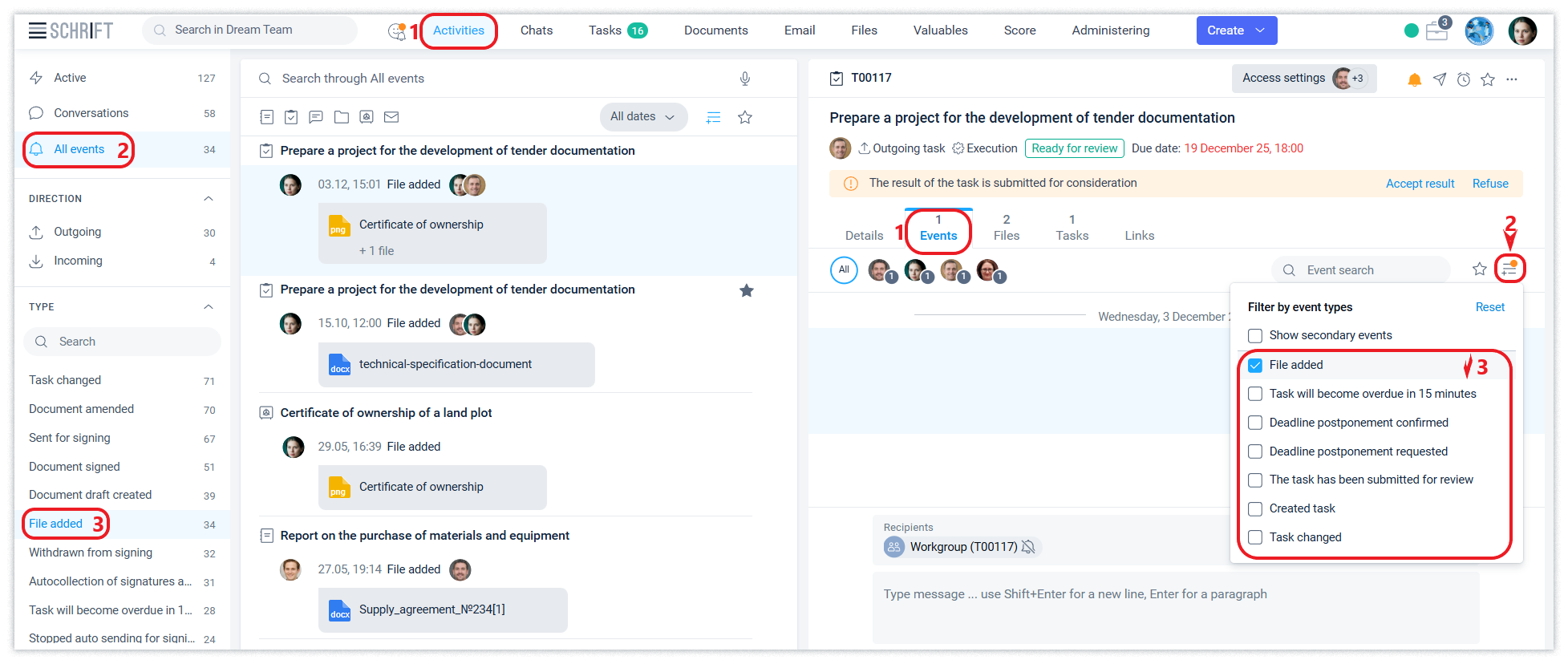
The status of this filter in the Events tab on the right side of the interface is saved and will be applied when switching between objects without the need to reconfigure it each time.
Filter “Package”
This filter is displayed if the object has links and is used to see events, files, tasks, and access data only for selected objects from the related objects that are part of the package.
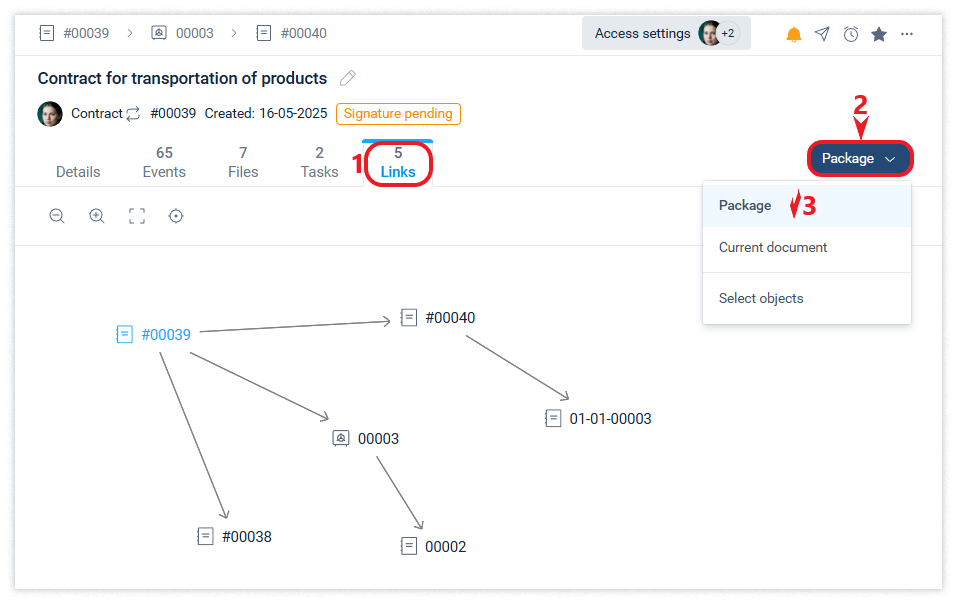
Using tags
Read about using tags as a way to store information in a structured way in the article Tags.
Full text search
Full-text search allows you to find information based on all the data in an object's content and works on all data elements: job titles, employee names, words in events, numbers and dates, tags, and many other data elements.
If you don't remember the number or name of an object, its author, or members of the working group, you may know what phrases or words were used in it, enter them in the search bar, and the system will display the objects in which they occur.
To quickly find the information you are interested in in a particular section, use the quick search by section. Almost every system interface has a quick search field.
After entering search elements in the search field, the system will offer the most relevant search results (recommendations) that you can use to perform a search or select a document you have found.
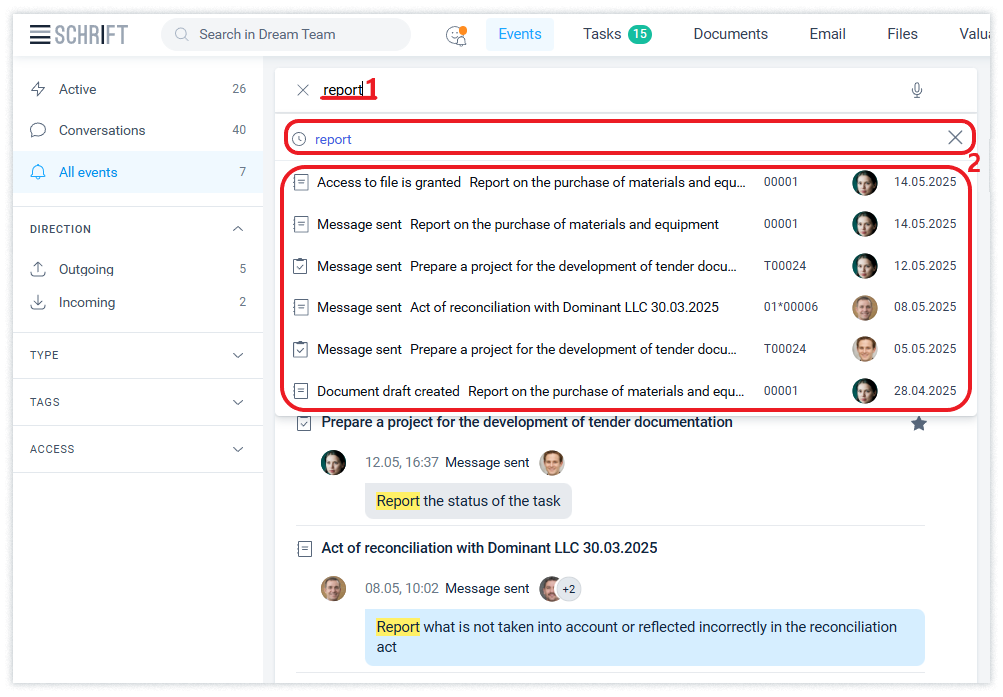
Each new search term must be entered in the field separated by a space. The search will display results that contain a combination of all the terms in the search field. Thus, adding search terms will narrow the search result.
The system will show results based on the occurrence of search criteria in words, regardless of whether these letters are placed at the beginning of the word, in the middle, or at the end.

Search is greatly enhanced by the use of tags, which serve both to mark a document with the appropriate word(s) useful for full-text search in the future and as virtual folders for storing and selecting documents through a filter in the filter panel.
The full-text search index is formed from the details that belong to objects and object elements, but taking into account the access of the corresponding position to the information that is the subject of the search.
Full-text search of text files is available with the Premium tariff.
Global search
Global search provides users with the ability to search all company data available to the user. While full-text search in a specific section works only on the data of this section.
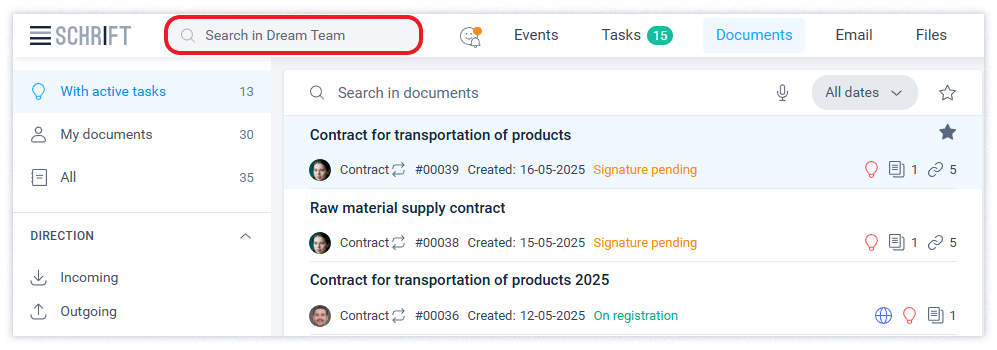
Voice input
Voice input of search criteria is available in the system. The user needs to dictate the search criteria and the system will automatically apply them and find the necessary data.

You can activate voice input by clicking on the microphone icon in the search field.
